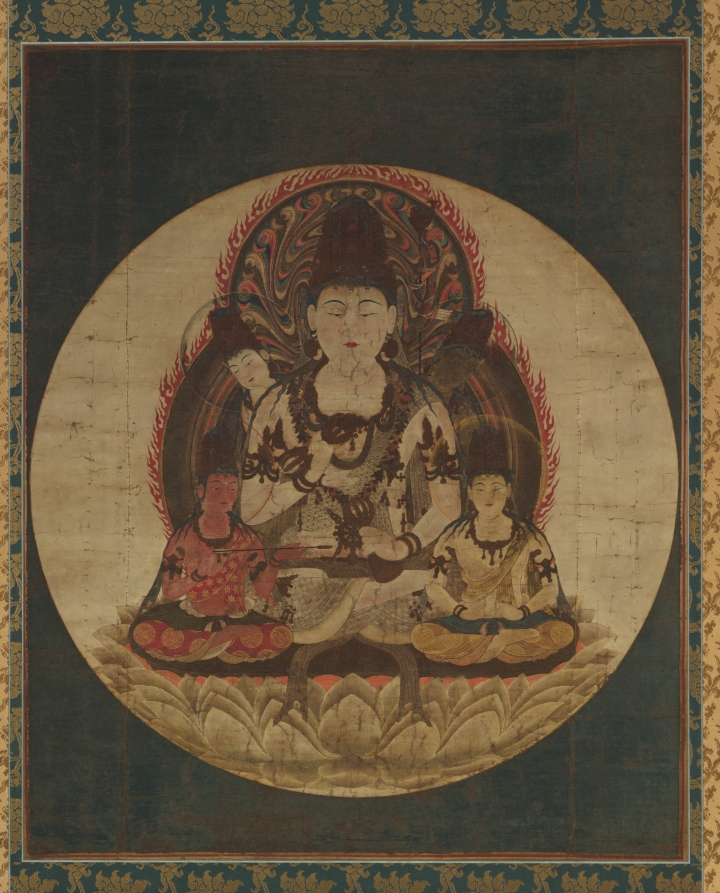| schema:description 10 | "type: Painting" |
| schema:description | "technique: hanging scroll; ink, color, gold, and silver on silk" |
| schema:description | "collection: ASIAN - Hanging scroll" |
| schema:description | "digital_description: The Secret Five were used in a Buddhist ritual to convert negative aspects of consciousness into positive ones. At the center is Kongōsatta, who represents the enlightened mind. He is surrounded by enlightened beings who convert the human frailties of desire, sensory pleasure, passion, and pride into constructive tools to use on the path to enlightenment....(more)" |
| schema:description | "culture: Japan, Kamakura period (1185-1333)" |
| schema:description | "id: 136952" |
| schema:description | "measurements: Image: 78.1 x 63.5 cm (30 3/4 x 25 in.); Overall: 163.2 x 83.8 cm (64 1/4 x 33 in.)" |
| schema:description | "wall_description: Devotees of the Shingon sect of Buddhism believe enlightenment is possible for the faithful within this very lifetime. Images of the Buddha served as an important instructional role in understanding the mysteries of faith and for honing one’s Buddha nature toward enlightenment. While Buddhism was founded by the historical Buddha, many sects of Buddhism venerate additional Buddhas, or enlightened ones: bodhisattvas, or bosatsu. In this painting, the large, central image represents the Supreme Buddha. Surrounding him are depictions of the four human illusions, each distinguished by color and attributes (clockwise): passion, pride, desire, and sensory delight. For Shingon followers, awareness and control of these four human illusions is essential to achieving enlightenment....(more)" |
| schema:description | "creditline: Mr. and Mrs. William H. Marlatt Fund" |
| schema:description | "tombstone: The Secret Five Bodhisattvas (Gohimitsu Bosatsu), 1200s. Japan, Kamakura period (1185-1333). Hanging scroll; ink, color, gold, and silver on silk; image: 78.1 x 63.5 cm (30 3/4 x 25 in.); overall: 163.2 x 83.8 cm (64 1/4 x 33 in.). The Cleveland Museum of Art, Mr. and Mrs. William H. Marlatt Fund 1961.423...(more)" |

